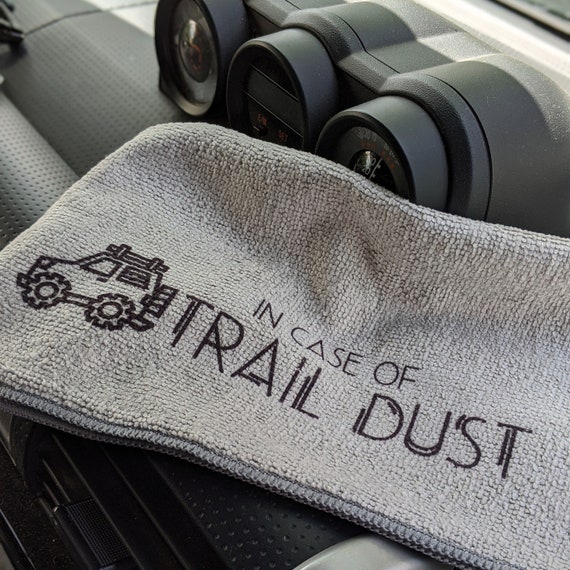Custom Microfiber Cloth for Beginners
Wiki Article
Custom Microfiber Cloth Things To Know Before You Get This
Table of ContentsHow Custom Microfiber Cloth can Save You Time, Stress, and Money.Some Known Factual Statements About Custom Microfiber Cloth Some Known Questions About Custom Microfiber Cloth.Some Ideas on Custom Microfiber Cloth You Should Know
Yet you recognize what, this approach is very easy to damage the lenses. Garments have large fiber voids, which can harbor a great deal of dirt with time. If there is tough dust inside the fabric (as an example, little sand, quartz solidity of 7) will certainly also damage the lenses, so wiping glasses by doing this will just be disadvantageous, and the even more you wipe, the much more blurred they will certainly be.Under the microscope, the scrapes on the surface area of the lenses are mainly separated into 2 kinds, one is because of grit scrapes, superficial and small, the wearer is challenging to notice; the other is produced by the bigger grit scratches, deep and rough around the perimeter, in the facility location will affect vision.
Exactly how to make use of a microfiber cloth to clean glasses If the lenses are wiped frequently and are not especially dirty, then we can clean the lenses directly with a fiber fabric. The specific technique is to hold the towel with your fingers, let the fabric cover the front and rear of the lens, and after that carefully compel the towel to wipe carefully in a solitary instructions till it is clean.
If the lenses are filthy or have not been wiped for too long, use the complying with steps. When rinsing, it is best to use a small amount of cleaning solution and use your thumb and index finger in concentric circles to scrub around the lens.
Fascination About Custom Microfiber Cloth
By the individual consistent appreciation. Because of the requirements of state-of-the-art household real estate, some top-quality furniture requires to be well cared for and kept, to ensure that the senior clean class will certainly have a huge market area. There is a good market for wiping towels for bathrooms and wiping fabrics for indoor cleansing.Weft knitting means that the thread is fed into the needle along the weft instructions to knit the material. The difference between weft knitted material and warp knitted textile is as adheres to.

The figure listed below programs one yarn weft knitting Warp knitted fabrics: Each row includes one or a number of identical teams of threads, with one thread forming only one (or more) loops in a row. custom microfiber cloth. The picture below programs 4 threads (environment-friendly, red, yellow, and white) Warp weaved textiles D. Knitting out the front and rear of the item pattern is not the exact same, particularly weft weaved materials
Single-sided weaved material: Knitted textile weaved by one needle bed. The loop arcs or loops of the loopholes are focused on one side of the fabric.
The Best Strategy To Use For Custom Microfiber Cloth

The longer it can be drawn, the far better. The stronger the healing capacity, the far better.
After the moment is reached, we will leave the tank and utilize the dewatering maker to completely dry, and after that use the equipment to unfold the cloth that is turned together, and ultimately utilize the machine to establish the shape at high temperature level to make the material level. If the color need is high, we need to go back to the brand-new clear water storage tank to wash the color before trembling it completely dry to eliminate the excess color or unpredictable shade material attached to the surface area.

Not known Details About Custom Microfiber Cloth
The textile will do the cleaning treatment on the textile after dyeing. That is the surface area of the fiber filaments with device friction, the surface area of its destruction, so regarding create great fluff to ensure that the surface of the microfiber textile is softer. microfiber brushing equipment guideline microfiber brushing equipment it is to draw away the lint/flocking and dust that are totally disappeared throughout the grinding process to make sure that the material is cleaner and tidier.Before dying, we need to do an open fiber treatment (as we pointed out at the door, the purpose of this is to make the surface of the textile much more cosy, the feeling will certainly be more mixed), then in the dyeing storage tank dyeing, after getting to the specified time and temperature level out of Click This Link the container dehydration, and then spread the towel for shaping, and after that back to the dyeing storage tank to re-shape (because the previous activity will certainly make the material is stretched and deformed), and finally soak up the woollen and rolled pile.
The textile will do the brushing therapy on the fabric after coloring. That is the surface of the fiber filaments with machine friction, the surface area of its damage, so regarding produce fine fluff to ensure that the surface area of the microfiber textile is softer. microfiber cleaning machine direction microfiber brushing maker it is to draw away the lint/flocking and dirt that are entirely worn off during the grinding process so that the fabric is cleaner and tidier.
Report this wiki page